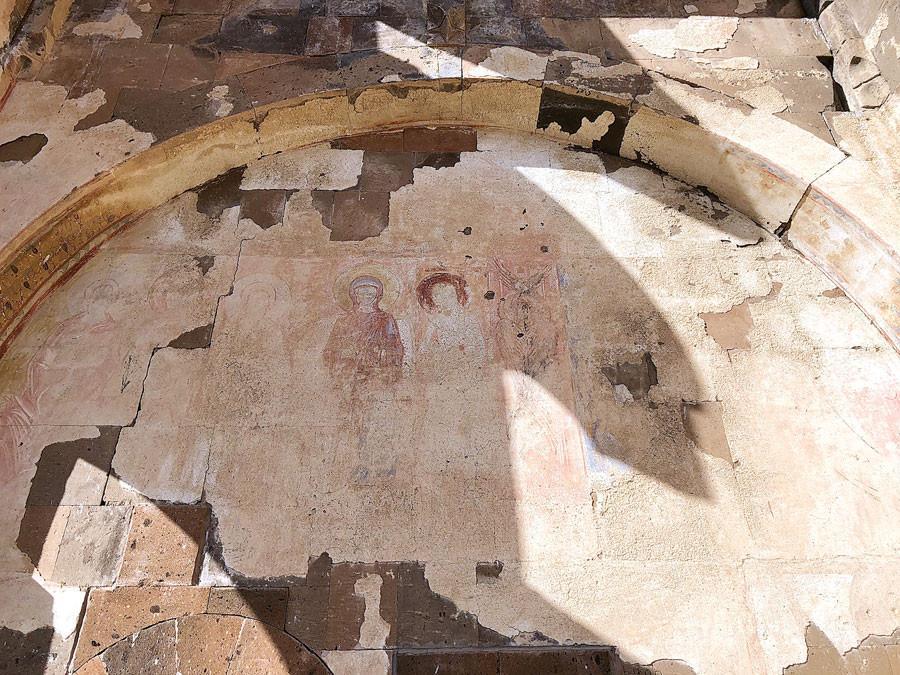
One can come across names carved on rocks, writings on walls and structural damages on cultural heritage buildings in Turkey. This scene is almost undeniable and natural for Turkish people. This is an urge, according to artist Huo Rf, a call to leave your mark and tell the world that you were there at that moment. Huo Rf reflects this urge on his new exhibition taking place at the El Hamra Passage, an historic building in Istanbul’s Taksim area.
In a way, he aims to show us how human beings live with this urge.
His third exhibition “Was Here” shows us both the carved names and writings on the Ani Ruins in the eastern province of Kars and how it is almost impossible to protect cultural heritage.
“In fact, I do not look at this as a problem. Every human has this urge. We all want to leave a sign or mark our names on something. It is like this everywhere in the world,” he said.
But when it comes to the Ani Ruins, things change, and it is possible to get emotional, according to the artist.
As in his previous exhibitions and works, Huo Rf once again takes his inspiration from his own life and his personal experience. The general idea of the exhibition came from his journey to Kars and Ani this year. Huo Rf used 10 copper plates to depict Ani and the writings on the walls of this monument. When the viewer gets close to these copper plates, she gets to see the names on the walls, which are carved randomly.
“Some carved their names, some wrote … was here, some wrote with markers, some wrote poems. We all know none of these should be there, because this is one of the most important cultural heritage sites in Turkey. But unfortunately we see it,” said the artist.
“Even if some are clear, most of these writings are indistinguishable as a result of the passing of time,” he said, adding that there is an unusual aspect about the place, the silence and the surrounding of it. That’s why, to emphasize its powerful stance in history, the artist decided that a book should accompany the exhibition. “The book consists of photographs I took when I visited Ani, Aşkal, Kars and their vicinity. There are writings and poems written by artists. I tried to create something that goes with the exhibition,” he said.
The desire to be seen
Through copper plates and photographs reflected with a projector, the work can be seen as one whole piece. The piece refers to the architectural damage in Ani and also to other wall writings we see daily on the streets, fountains, and other historic buildings, said the artist. In fact, beyond all these signs, the exhibition aims to shed light on the relationship between the desire to be seen/heard through an unrestrainable vandalizing motive and the desire to go back and find one’s trace on the walls.
While the photographs document the relics of İliç, Aşkale, Ani, and the surrounding towns without a trace of life, they provide details of the geographical landscapes that are engraved on the copper plates. The loneliness and the reality of the landscape have opened a new understanding for Huo Rf. In a way, he feels the old pain that surrounds this area. On the other hand, his own experience marks its sign to his life. Now, he knows what the desire to be seen and heard enough is and how this urge can control a human being.
The exhibition will be held until Oct. 15.